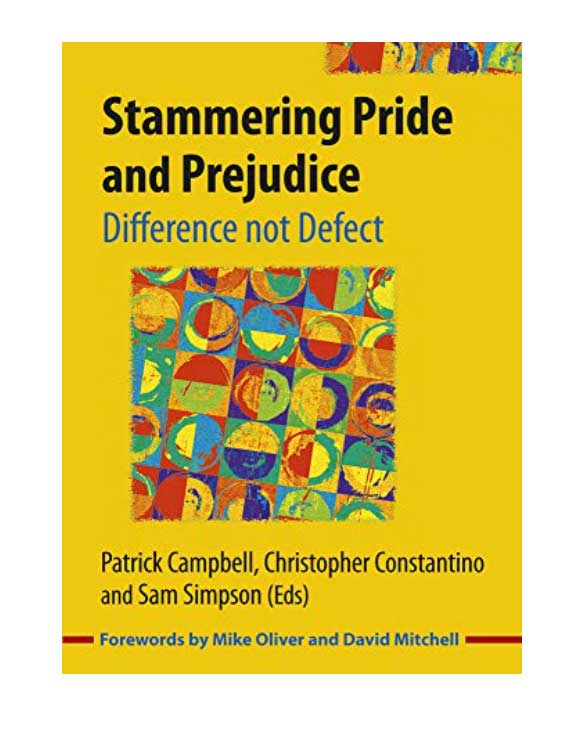This is the third selected essay from the text, Stammering Pride and Prejudice. Like the author of the previous essay Scary Canary, writer Patrick Campbell had years of speech therapy, striving to be fluent for most of his life. As a student in medical school, he tried tricks to hide his stuttering whenever he spoke. His thinking changed when he embraced the social model, an approach that frames biases in society as the problem to be addressed, not the existence of stuttering itself. People who stutter are hard on themselves, he observes, and feel embarrassed and guilty for their imperfection, but they are “people with stigma rather than people with a speech problem.”
Campbell lists five ways that society is geared towards fluent speech and discriminates against people who stutter.
- Voice automated systems. Many telephone systems that ask for verbal feedback do not accommodate disfluencies, leaving people who stutter on the edge of the technology.
- “Verbal communication skills” required by employers. Many job ads list “excellent verbal communication skills” as a requirement even when disfluency does not impede a person’s ability to do the job. Employers and workers can prepare themselves to deal with customers and co-workers who may stutter.
- The hidden nature of stuttering. A person who stutters, passes as “normal” until they speak, and its seeming inconsistency can lead people to not take it seriously, and to attribute personal failings in the speaker such as rudeness, laziness and dishonesty.
- Role models. Many people put forth certain celebrities as role models for PWS, even if they do not display stuttering anymore, and emphasize the fact that they have “overcome” it, suggesting that people could stop stuttering if they only had the fortitude.
- The language of the majority. There is a predominantly negative vocabulary used to describe stuttering, ”suffering”, “struggling,” and framing it as something that needs to be corrected.
Unfortunately, says Campbell, people who stutter internalize the stigma, through awareness (they perceive the public attitudes), agreement (they come to believe in them), and application (they live according to the stereotype through avoidance behaviours). In a vicious cycle where we become what society has pronounced us to be, the prejudice of society can become a self fulfilling prophecy for people who stutter.
Summing up, Campbell agrees that people who stutter need to be proud of who they are, and that it is possible to “challenge societal prejudices and build a narrative of positivity and empowerment around stuttering.”
Next Month: Dori Holte and her critique of speech therapy for children.

